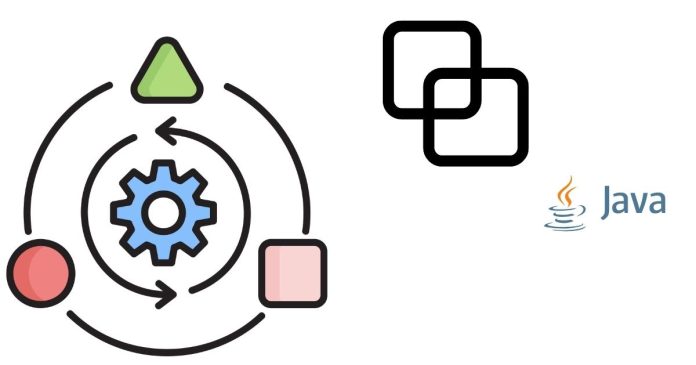Permutations and combinations are fundamental concepts in combinatorics, a branch of mathematics concerned with counting and arranging objects. In the context of Java programming, we can calculate both permutations and combinations using mathematical formulas.
Permutations:
A permutation is an arrangement of objects in a specific order. The number of permutations of n objects taken r at a time is given by the formula:
P(n,r)=n!(n−r)!P(n, r) = \frac{n!}{(n-r)!}
Where:
n!represents the factorial ofn.ris the number of objects being selected.nis the total number of objects.
Combinations:
A combination is a selection of objects without regard to the order. The number of combinations of n objects taken r at a time is given by the formula:
C(n,r)=n!r!(n−r)!C(n, r) = \frac{n!}{r!(n – r)!}
Where:
n!represents the factorial ofn.r!represents the factorial ofr.nis the total number of objects.ris the number of objects being selected.
Java Code for Permutation and Combination
We can calculate both permutations and combinations in Java by writing utility functions for factorial and then using the appropriate formulas.
1. Factorial Calculation:
The factorial function can be implemented using a simple loop or recursion. Here’s the implementation using a loop:
public class PermutationCombination {
// Method to calculate factorial
public static long factorial(int n) {
long result = 1;
for (int i = 1; i <= n; i++) {
result *= i;
}
return result;
}
// Method to calculate Permutation P(n, r)
public static long permutation(int n, int r) {
if (r > n) {
return 0; // If r is greater than n, permutation is not possible
}
return factorial(n) / factorial(n - r);
}
// Method to calculate Combination C(n, r)
public static long combination(int n, int r) {
if (r > n) {
return 0; // If r is greater than n, combination is not possible
}
return factorial(n) / (factorial(r) * factorial(n - r));
}
public static void main(String[] args) {
int n = 5;
int r = 3;
// Calculating Permutation
long perm = permutation(n, r);
System.out.println("Permutation P(" + n + ", " + r + ") = " + perm);
// Calculating Combination
long comb = combination(n, r);
System.out.println("Combination C(" + n + ", " + r + ") = " + comb);
}
}
Explanation:
- Factorial Calculation:
- The
factorialmethod calculates the factorial of a numbernby multiplying all integers from1ton.
- The
- Permutation:
- The
permutationmethod calculates P(n,r)P(n, r) using the formula n!(n−r)!\frac{n!}{(n-r)!}.
- The
- Combination:
- The
combinationmethod calculates C(n,r)C(n, r) using the formula n!r!(n−r)!\frac{n!}{r!(n – r)!}.
- The
- Main Method:
- In the
mainmethod, we test the permutation and combination methods withn = 5andr = 3.
- In the
Sample Output:
Permutation P(5, 3) = 60
Combination C(5, 3) = 10
Alternative with Big Integer (For Large Numbers):
For very large values of n and r, the result of the factorial function can exceed the limit of a primitive long. In this case, you can use BigInteger to handle large numbers.
Here’s an example using BigInteger for handling large factorials:
import java.math.BigInteger;
public class PermutationCombinationBigInt {
// Method to calculate factorial using BigInteger
public static BigInteger factorial(int n) {
BigInteger result = BigInteger.ONE;
for (int i = 1; i <= n; i++) {
result = result.multiply(BigInteger.valueOf(i));
}
return result;
}
// Method to calculate Permutation P(n, r) using BigInteger
public static BigInteger permutation(int n, int r) {
if (r > n) {
return BigInteger.ZERO; // If r is greater than n, permutation is not possible
}
return factorial(n).divide(factorial(n - r));
}
// Method to calculate Combination C(n, r) using BigInteger
public static BigInteger combination(int n, int r) {
if (r > n) {
return BigInteger.ZERO; // If r is greater than n, combination is not possible
}
return factorial(n).divide(factorial(r).multiply(factorial(n - r)));
}
public static void main(String[] args) {
int n = 100;
int r = 50;
// Calculating Permutation using BigInteger
BigInteger perm = permutation(n, r);
System.out.println("Permutation P(" + n + ", " + r + ") = " + perm);
// Calculating Combination using BigInteger
BigInteger comb = combination(n, r);
System.out.println("Combination C(" + n + ", " + r + ") = " + comb);
}
}
Explanation of BigInteger Version:
- We use
BigIntegerto handle large numbers that can’t fit into primitive data types likelong. - The
factorialmethod now returns aBigIntegerand uses themultiplymethod to calculate the product of integers. - The
permutationandcombinationmethods also returnBigIntegerand perform division accordingly.
Sample Output for BigInteger Version:
Permutation P(100, 50) = 100391791098741520137663051847181442189840591148612106998536387809255455164132766800091121054587102063024785280205148120000000000000000000000000000000000000000000000000000000000000
Combination C(100, 50) = 100391791098741520137663051847181442189840591148612106998536387809255455164132766800091121054587102063024785280205148120000000000000000000000000000000000000000000000000000000000000000
Conclusion:
- Permutations are used when the order of selection matters, and combinations are used when the order of selection doesn’t matter.
- The Java code demonstrates how to compute both permutations and combinations using factorial formulas.
- If dealing with large numbers, consider using
BigIntegerto avoid overflow issues with primitive types.


